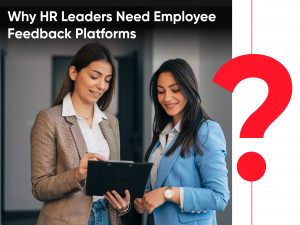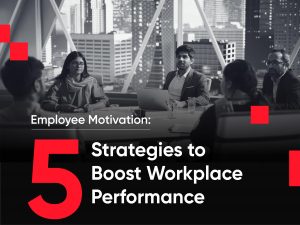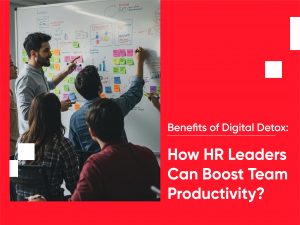Reading Time: 5 minutes
In the fast-paced world of recruitment, where first impressions and snap decisions often dictate the fate of job applicants, the issue of unconscious bias looms large. Unconscious biases are the deeply ingrained stereotypes and prejudices that affect our judgment without us even realizing it. These prejudices can have a substantial impact on the recruiting process, perpetuating inequities and impeding the development of diverse and inclusive workplaces. In this article, we’ll look at the complexities of unconscious bias in recruitment and solutions for creating a fair and equitable hiring process.
The Power of Unconscious Bias
Unconscious biases are rooted in our evolutionary past, designed to help us quickly assess situations and make decisions in a split second. While this mechanism might have served our ancestors well, it can have detrimental consequences in today’s complex and interconnected world, particularly in the realm of recruitment. These biases often lead us to favor individuals who resemble us or fit into our preconceived notions of success. As a result, qualified candidates from diverse backgrounds might be overlooked, leading to a homogenous workforce that lacks fresh perspectives and innovative ideas.
The Halo and Horns Effects
Two common manifestations of unconscious bias are the “Halo” and “Horns” effects. The Halo effect occurs when a single positive trait about a candidate color our perception of their overall suitability for a position. Conversely, the Horns effect causes us to focus on a single negative trait and disregard other positive attributes. These biases can lead to hasty judgments, overlooking candidates’ potential or ignoring their shortcomings. To mitigate these effects, recruiters should be trained to evaluate candidates holistically and focus on the specific skills and qualifications relevant to the job.
Picture This:
A hiring manager is reviewing a pile of resumes. They might unknowingly favor candidates whose names sound more familiar or similar to their own, inadvertently neglecting individuals from diverse backgrounds. This seemingly innocuous inclination can have a ripple effect, perpetuating an environment of homogeneity within the workplace.
So, how can organizations combat unconscious bias and create a fair hiring process that truly taps into the potential of all candidates?
1. Recognize and Acknowledge Bias:
The first step towards addressing unconscious bias is acknowledging its existence. This might sound simple, but it’s a crucial step in the journey toward creating a more equitable recruitment process. When recruiters and hiring managers become aware of the potential biases that might influence their decisions, they are better equipped to counteract them.
So, how can organizations combat unconscious bias and create a fair hiring process that truly taps into the potential of all candidates?
2. Educate and Train:
Education is a powerful tool for change. Companies can provide training to recruiters and hiring managers about unconscious bias, which is a crucial step. Awareness can help individuals recognize their biases and implement strategies to counteract them effectively. Workshops, case studies, and interactive sessions can foster a deeper understanding of the issue.
3. Structured Interviews:
Unstructured interviews, where the conversation flows freely, are breeding grounds for unconscious bias. By using organized interviews with preset questions, you can ensure that all candidates are evaluated using the same criteria. This approach not only levels the playing field but also helps recruiters focus on candidates’ skills and experiences rather than personal biases.
4. Diverse Interview Panels:
When forming interview panels, consider diversity not just in terms of candidates but also among the interviewers. A diverse panel brings varied perspectives to the table and can help in minimizing individual biases. Different points of view can lead to a more comprehensive examination of candidates, taking into account a variety of talents, experiences, and attributes.
5. Blind Resume Screening:
To counteract the impact of names, genders, or other identifiable information on resumes, some companies have adopted the practice of blind resume screening. This involves removing personally identifiable information from resumes before they are reviewed, focusing solely on the candidate’s qualifications and experiences.
6. Implementing Technology:
In the age of artificial intelligence, technology can play a pivotal role in reducing unconscious bias. AI-driven tools can analyze and rank candidates based solely on their skills and qualifications, minimizing the risk of biased decision-making. However, it’s essential to ensure that these technologies themselves are designed without inherent biases.
7. Clearly Define Job Requirements:
A well-defined job description sets the stage for unbiased hiring. Ensure that job requirements are clear, concise, and relevant to the role. This prevents the inclusion of unnecessary criteria that might inadvertently favor certain groups over others.
8. Assess Cultural Fit Thoughtfully:
While assessing cultural fit is important, it should be approached thoughtfully. Rather than focusing solely on shared hobbies or personalities, emphasize alignment with the company’s values, goals, and mission. This approach broadens the understanding of cultural fit and reduces the potential for unconscious bias.
9. Regularly Review and Improve:
The fight against unconscious bias is an ongoing process. Organizations should consistently review their recruitment processes, analyzing data and seeking feedback from both candidates and hiring teams. This continuous strategy enables continual improvement and guarantees that biases are addressed on a regular basis.
10. Foster Inclusive Company Culture:
A company that values diversity and inclusion is less likely to succumb to unconscious biases. When employees feel valued for their unique perspectives, biases tend to diminish. Create an environment where open discussions about bias are encouraged and where everyone has a voice.
Benefits of a Fair Hiring Process
Implementing strategies to address unconscious bias in recruitment not only promotes fairness but also brings tangible benefits to organizations. A diverse workforce leads to a broader range of perspectives, innovative problem-solving, and enhanced creativity. Studies have consistently shown that diverse teams outperform homogenous ones, leading to better financial performance and improved decision-making.
Furthermore, firms that value diversity and inclusion tend to recruit top talent from a diverse variety of backgrounds. In a world where reputation matters, fostering an inclusive workplace can be a powerful recruiting tool, helping organizations stand out and attract the best candidates. Unconscious bias is a formidable challenge that organizations must confront head-on if they are to create truly diverse and inclusive workplaces. By acknowledging the existence of bias and implementing strategies to counteract it, companies can foster fairer hiring processes that allow candidates to shine based on their skills and qualifications. In the end, the efforts put into addressing unconscious bias will not only lead to better hiring decisions but also contribute to building a more innovative, dynamic, and successful workforce for the future.










